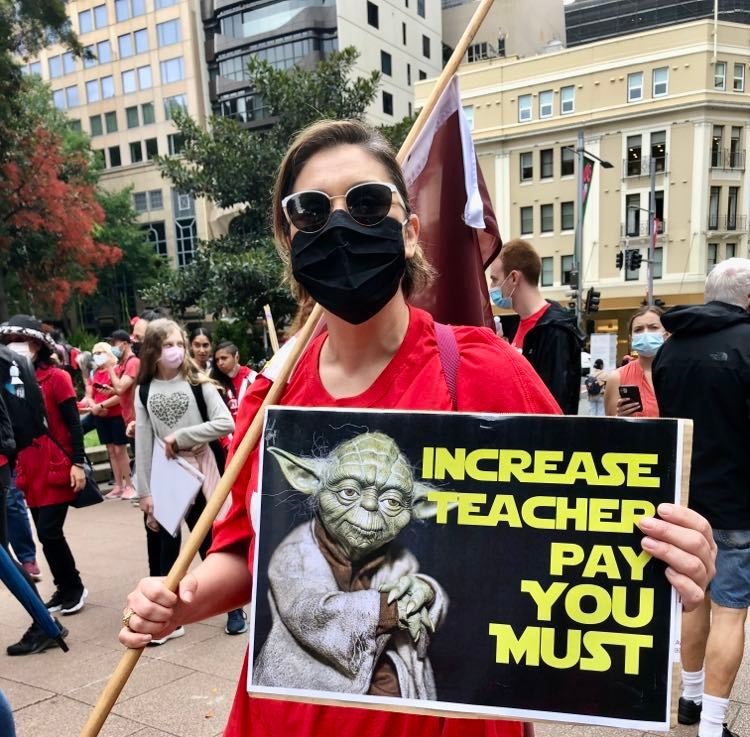
Tens of thousands of teachers went on strike across New South Wales on December 7, with rallies against staff shortages and for sustainable workloads with competitive salaries. In Sydney, more than 15,000 teachers and principals gathered in Hyde Park and marched to the NSW Parliament where they heard from their colleagues and union officials.
The NSW Teachers Federation (NSWTF) defied an Industrial Relations Commission (IRC) order to cancel the strike to demand the government listened. It was the union's first major industrial action in more than a decade.
The main chant was “More than thanks!” This referred to the government’s pretend support for teachers when they work 55 hours a week or more to keep up with higher student needs and constant curriculum changes, their wages have fallen behind other professions and one in eight teachers leaves the profession within six years because of the pay and workload pressures.
Across the state, more than 1000 full-time teaching positions have not been filled and the work conditions mean it is harder to recruit talented people to become teachers.
The NSWTF is demanding a 5% pay rise across the board, with an additional 2.5% rise for the most experienced teachers, together with two hours’ extra planning and preparation time per week.
This challenges the government’s public sector pay cap of 2.5%, imposed in 2011, which has meant wage cuts for all public sector workers.
NSW Education Minister Sarah Mitchell launched a vitriolic attack on the NSWTF on the day of the strike in the Sydney Morning Herald, including that teachers “deserve better representation” and that the NSWTF “actively fights any move to increase transparency in the school system and blocks initiatives to lift outcomes and support students”.
NSWTF President Angelo Gavrielatos addressed her comments, telling the rally that the union was more than happy to talk about transparency.
“The government has covered up hundreds of pages of documents from its own department revealing that NSW is currently facing a large and growing teacher shortage,” he said.
“The documents state that we will run out of teachers in five years. Where’s the transparency in this government cover-up?” he asked.
Gavrielatos acknowledged the distance teachers had travelled to attend the strike, those taking their first industrial action — “one you experience your first collective action you never go back” — and ended with: “We're not going away. We will be back.”
Teachers from a number of suburban and regional schools addressed the strike. They gave details of how difficult it is to teach when, for instance, staff shortages mean that up to four classes have to merge in the library.
One teacher received loud applause when she said: “The NSW government is throwing us under the bus, while we attempt to clean up their mess!”
An experienced primary school teacher told Green Left: “One in five high school teachers are being forced to teach outside their own subject areas because of the teacher shortage. It is simply unfair to Higher School Certificate (HSC) students especially to be taught by teachers outside their area of expertise.
“It was very uplifting to be part of this strong industrial action today. One colleague told me it was the first time in their 23 years’ teaching experience that the whole of their school shut down for the day.
“The huge turn-out of young teachers was very encouraging. It bodes well for the future of the campaign, and teacher unionism in general.”
He said the NSWTF will try to negotiate for a better enterprise agreement but “unless teachers’ needs are substantially met, we will need to take further strong industrial action next year”.
